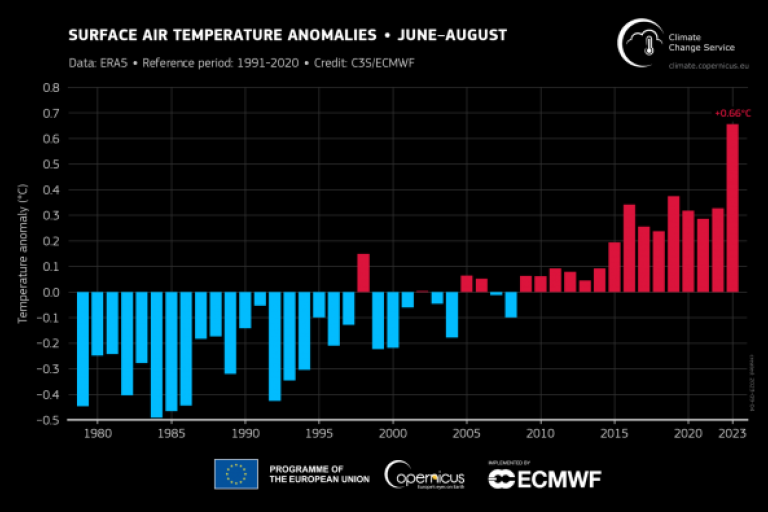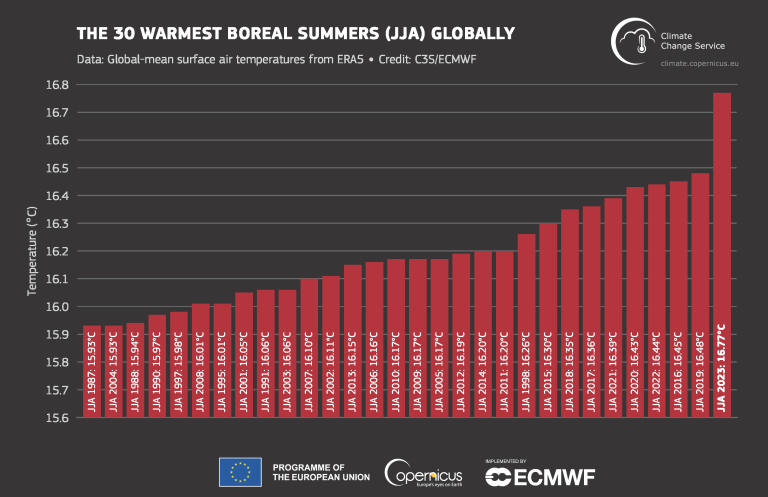Earth had hottest three-month period on record, with unprecedented sea surface temperatures and much extreme weather
Bonn and Geneva - Earth just had its hottest three months on record, according to the European Union-funded Copernicus Climate Change Service (C3S) implemented by ECMWF. Global sea surface temperatures are at unprecedented highs for the third consecutive month and Antarctic sea ice extent remains at a record low for the time of year.
- News was produced by:
- World Meteorological Organization (WMO) ,
- European Centre for Medium-Range Weather Forecasts (ECMWF)

It was the hottest August on record – by a large margin – and the second hottest ever month after July 2023, according to the Copernicus Climate Change Service ERA 5 dataset. August as a whole is estimated to have been around 1.5°C warmer than the preindustrial average for 1850-1900, according to the C3S monthly climate bulletin.
The year so far (January to August) is the second warmest on record behind 2016, when there was a powerful warming El Niño event.
August as a whole saw the highest global monthly average sea surface temperatures on record across all months, at 20.98°C. Temperatures exceeded the previous record (March 2016) every single day in August.
Antarctic sea ice extent remained at a record low level for the time of year, with a monthly value 12% below average, by far the largest negative anomaly for August since satellite observations began in the late 1970s. Arctic sea ice extent was 10% below average, but well above the record minimum of August 2012.
WMO consolidates data from C3S and five other international datasets for its climate monitoring activities and its State of the Climate reports.
A report in May from WMO and the UK's Met Office predicted that there is a 98% likelihood that at least one of the next five years will be the warmest on record and a 66% chance of temporarily exceeding 1.5°C above the 1850-1900 average for at least one of the five years. This does not mean that we will permanently exceed the 1.5°C level specified in the Paris Agreement which refers to long-term warming over many years.











